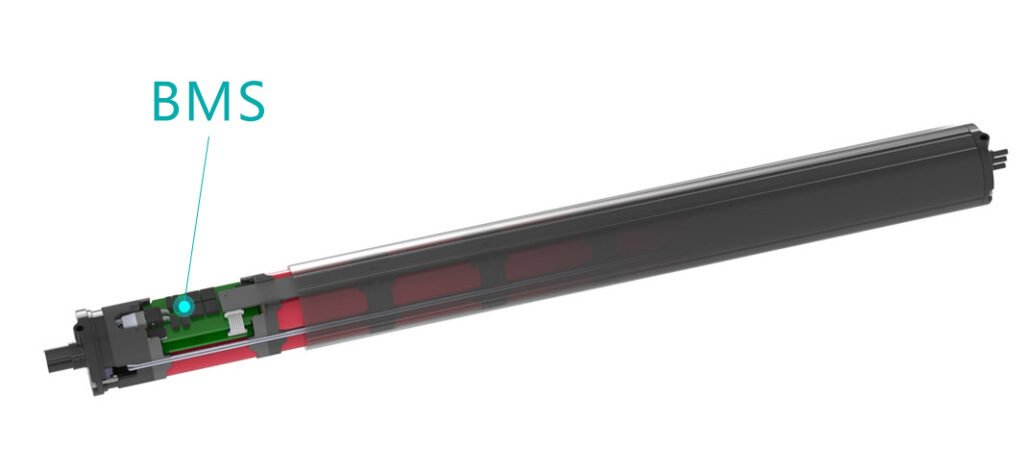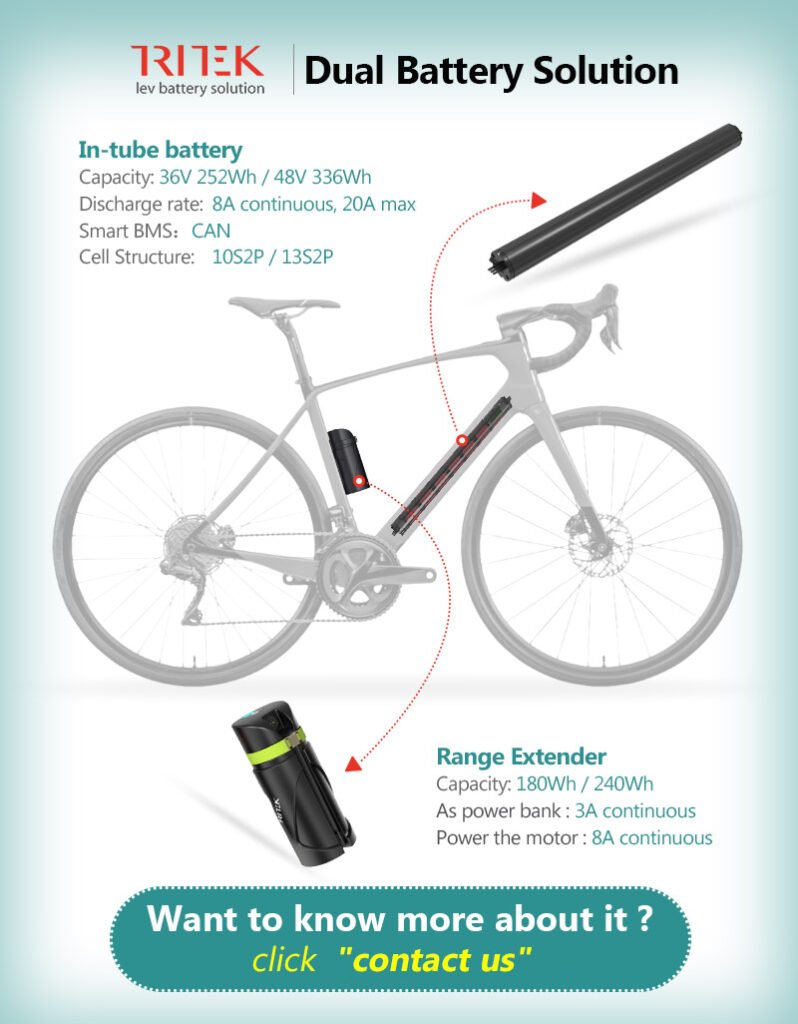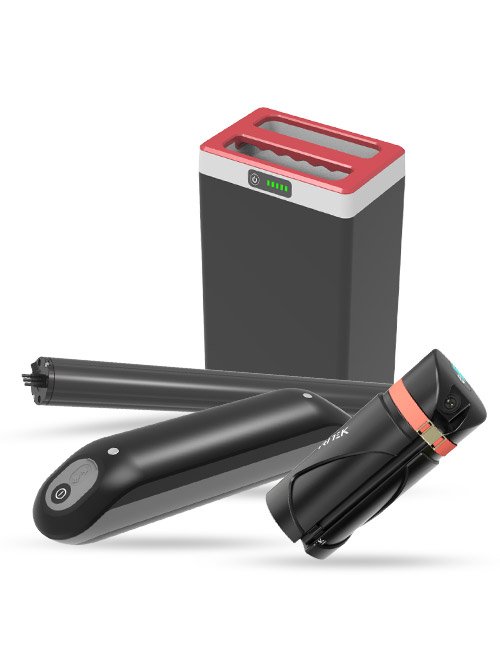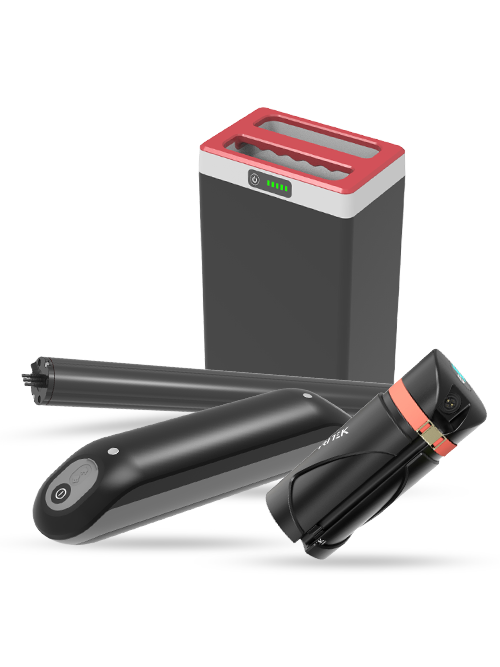This guide will cover all of the basics of on road bike battery – We’ll also go over some of the most common problems that people experience when choosing their batteries.
Biking is a great way to get around, and it’s becoming more popular every year. More and more people are using electric bikes for transportation, exercise, and racing. If you’re an e-bike manufacturer, you know that having a good battery is essential. An e-bike battery can make the difference between having good quality and bad quality.
So, whether you’re looking to upgrade your current battery or an experienced manufacturer, this guide has something for you!

Types of Road Bike Battery
There are two main types of e-bike batteries: lead-acid batteries, and lithium-ion batteries (Li-ion). Each type has its unique benefits and drawbacks.
Lead-acid batteries are the most common type of battery. They are affordable and durable, but they are also heavy and have a shorter battery life span than other types of batteries.
The lithium-ion battery is the lightest and most efficient type of battery. It also has a long lifespan. Although it’s more expensive, it has been the most popular battery solution for E-bike.

Features of Road Bike Battery
Road bike batteries are typically much more powerful than other types of bicycle batteries. They can deliver more power for longer periods of time, making them perfect for use on road bikes.
Other e-bike batteries may not be able to provide enough power to the motor, which can cause it to slow down or stop working completely. Road bike batteries are also designed to be lighter, which makes them easier to carry around. This is important when you’re cycling long distances and need to keep your battery as light as possible.
PACK Structure & Parameters
When choosing a battery for your road bike, there are many things to consider. The most important factors are:
- Structure
- Voltage
- Capacity
- Dimensions
Common e-bike battery styles include in-tube batteries, down-tube batteries, and rear rack batteries. A lot of batteries for road e-bikes are in-tube batteries. The reason is cylindrical batteries are more compact and lightweight. And putting batteries in the tube can help save plenty of space which is very important for a racer.
Discover more about e-bike trend in 2022 — in-tube batteries

Click on the photo to discover more about the inner tube battery.
The voltage of a battery determines how much power it can output. Most road bikes require a 36-volt or 48-volt battery. Higher voltages provide more power but also require correspondingly larger batteries that take up more space and weigh more.
The battery capacity determines how long it will last before needing to be recharged. Batteries with higher capacities last longer between charges. However, they also tend to be heavier and cost more than batteries with lower capacities. So the designer must balance between capacity, cost, and weight.
There are internal dimensions and external dimensions that need to be considered for a road bike battery pack. Internal dimensions are the size of the battery itself, while external dimensions include everything else: the case, mounting hardware, and any extra space needed for wiring. Be sure to select a battery that will fit inside your frame!
Cell Type
Cell type is an important consideration when selecting a battery for your road bike. Each type of cell has its own strengths and weaknesses.
There are three types of battery cells: cylindrical, prismatic, and pouch cells. This guide will only discuss the most mainstream cells, cylindrical cells 18650 and 21700.
18650 cells are the most popular type of cylindrical cell. They have been used in laptop batteries and other electronics for many years. They are affordable and have a good balance of performance and lifespan.
21700 cells are a newer cell that is becoming more popular in E-bikes because they offer more capacity than 18650 cells.

Which type of cell you choose will depend on your needs and budget.
BMS for bike battery
A battery management system, or BMS, is a device used to protect and manage a lithium-ion battery. It does this by regulating the voltage and current going in and out of the battery, as well as monitoring the temperature and state of charge. This helps ensure that the battery remains healthy and safe for use.

The core functions of BMS include:
Measuring
- Cells voltage sampling
- Cells temperature sampling
- Pack’s total voltage sampling etc
Core algorithm
- SOC (battery state)
- SOH (life state)
- SOP (power state)
- Battery equalization etc
Application function
- Charging & discharging management
- Battery system thermal management
- Battery fault diagnosis system
- Power management system,
- CAN bus communication interface etc.
Range Extender
A range extender is a device that is attached to the bicycle and helps to increase the distance that the bike can travel. This is a great option for those who want to be able to ride their bike for longer distances without having to worry about running out of battery power.
There are a few different types of range extenders available on the market, and each has its own benefits and drawbacks. It’s important to do your research before purchasing a range extender to make sure you’re getting the best product for your needs.
We also produce our own range extenders for your reference:

Certifications(tests)
Safety for LEV batteries is a critical concern and there are some certification requirements correspondingly.

Taking the European market, for example, exporting to the EU requires CE-EMC and all the exports for batteries require UN 38.3 for transportation safety. And most e-bike manufacturers always require their battery suppliers to do IEC-62133 tests and provide reports to prove the quality& safety.
There are other safety requirements for batteries, such as UL2271 (for lithium-ion cells and packs). And there are also specific tests required by different markets (like the US). Suppliers who want to export their batteries to these regions must be familiar with these regulations and make sure that their products meet all of the necessary safety standards.
The good news is that most battery suppliers have already done these tests and have the relevant certification. If you’re unsure about your supplier or if they can provide the appropriate certificates, always ask before you buy. This will help ensure that your e-bike rides smoothly – both figuratively and literally!

This guide provides an overview of some common road bike battery solutions and just hope it could help you to some extent.
For more information about the batteries, you intend to know, please check and leave a message on our website.
Tritek is a professional lithium battery power solution company founded in Shenzhen. It is famous for providing high-quality products. Our lithium batteries for electric bikes and motorcycles can meet your needs.
Read more:



